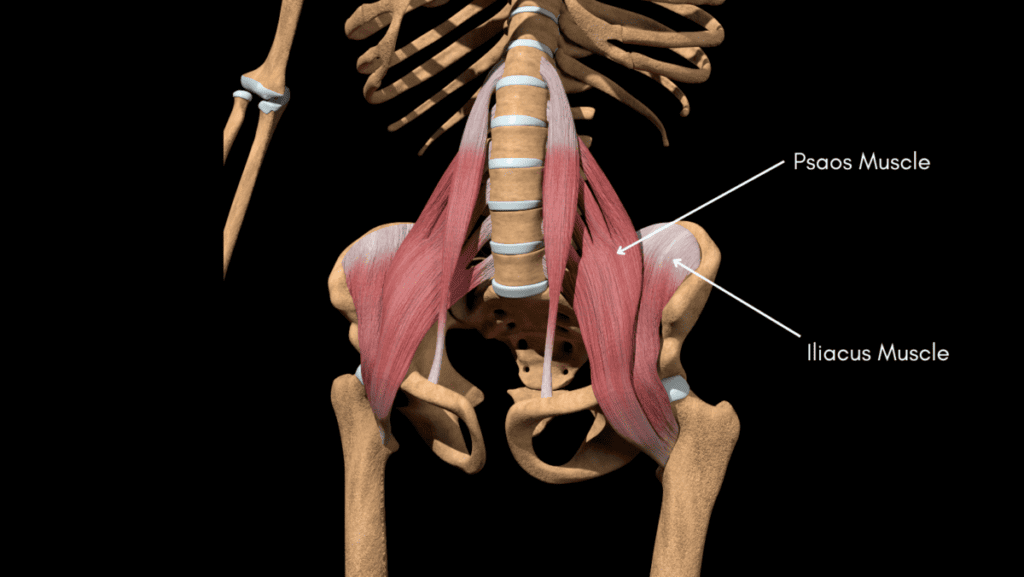Hip Flexor Pain
- Best Asics Shoes for Flat Feet - October 25, 2024
- Best Running Shoes for Flat Feet - October 22, 2024
- Posterior Tibial Tendonitis - October 21, 2024
Pain in the hip flexor is a common complaint experienced by runners, football players, dancers, hockey players, cyclists, and those participating in martial arts. It can be described as a sharp pain in the hip flexor in more acute and severe cases and a dull ache or discomfort in milder or more chronic cases that are not acutely aggravated.
Where Is Hip Flexor Pain Felt?
The hip flexor is a group of muscles at the front of the hip, and their action is to flex the hip joint. These muscles are the rectus femoris, psoas, and iliacus.
The Rectus Femoris is one of the four quadriceps muscles unique compared to the other quadriceps muscles as it is attached above the hip joint and can help hip flexion.
The Psoas and iliacus are often called the iliopsoas, but they are two distinct muscles. They both attach to the top of the thigh bone, the psoas attaches to the lower spine at several levels, and the iliacus attaches to the iliac crest of the pelvis.
Hip flexor pain location will be around these muscles at the front of the hip joint, often felt in the crease that is formed when we flex the hip. Pain is often worse when the hip is flexed actively by using these muscles and can also be aggravated by being pinched in the fully flexed hip position, such as with a deep squat.

Causes
Hip Flexor Strain
A strained hip flexor is when one or several hip flexor muscles have been worked beyond their capacity. This can be either with a single sudden overload or over time without significant time or capacity for recovery. Recovery is much shorter than a tear.
Hip Flexor Tear
A hip flexor tear is a more severe injury to a strain, there is more tissue damage, and recovery will take more time. A tear can be graded 1-3, with one being minor damage and minimal loss of function and 3 being a complete muscle rupture with significant functional impairment.
Hip Flexor Tendonitis
Hip flexor tendonitis is an injury or overload to the tendon of one of the hip flexor muscles. A tendon connects a muscle to a bone and is structurally different from a muscle. The difference in structure means it can be affected differently by exercise and load than a muscle, and it takes longer to adapt and recover due to less blood supply.
Hip Flexor Pain Treatment
Treatment should be directed by a medical professional, such as a physical therapist who has assessed your injury and has experience with musculoskeletal pain and rehabilitation. Rest will be necessary for most muscular injuries, stains, or tears.
The duration of the rest period and whether complete rest or reduced activity is necessary will depend on the severity of the injury. Ice can effectively manage pain during this time and when some exercise is introduced.
Once past the very acute phase of 7-10 days, non-steroidal anti-inflammatory drugs can also be effective in most cases.

Exercises
The best hip flexor exercises for pain relief will depend on the cause of the pain and the stage of recovery. Exercises should be orientated towards hip flexor pain relief in the acute stages.
For a muscular strain, this might include gentle stretches; for a muscle tear, it might be complete rest or gentle active or partially assisted movements; and for tendonitis or tendinopathy, they might include isometric exercises of the hip flexors.
Stretches For Pain Relief
Here is one of the best stretches for the hip flexors. It can be altered in different ways to stretch the specific muscles of the hip flexor group:
- Psoas muscle – a side bend of the body away from the kneeling leg
- Rectus femoris – lifting the back foot onto a step

Chronic Hip Flexor Pain
Chronic hip flexor pain is often related to the tendon, as muscles can heal well and relatively quickly. In some cases, it can be repeated strains to the muscle. However, these would usually be identified as repeated hip flexor injuries rather than continuous and chronic hip flexor pain.
Tendinopathy can develop and will remain if not treated and managed appropriately. Unlike a muscle injury, tendinopathy will often not resolve with rest and a gradual increase in activity. It may need more active and specific rehabilitation.
If you have hip pain that is not improving, see an experienced physical therapist for an assessment and the right plan of action to resolve it.
___________________________________________________________
Related Articles:
Hip Pain Chart – Hip Labral Tear – Femoroacetabular Impingement
We offer Online Appointments for £60 and Face-to-Face appointments for £85 in our clinics.
